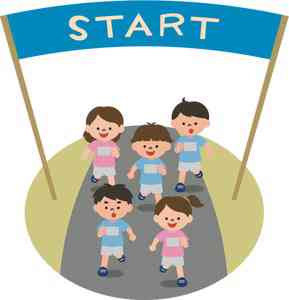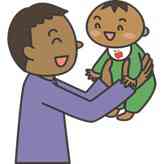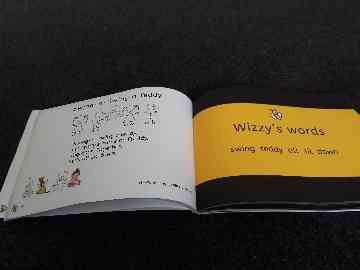How To Share Books with Your Children: #Dialogic #Reading
How To Share Books with Your Children: Dialogic Reading
Introduction
As a parent it is easy to assume that we know all there is to know about chatting, reading and sharing a book with our children. Having taught and studied child development for many years, I realised that for many of us, in a busy world, we really do need a little support. This is to ensure that we don’t overlook the importance of supporting our children’s language development from birth onwards. I have written this blog to help parents and educators, to understand or reconnect with the value of applying a dialogic approach to reading.
GIVE CHILDREN A HEAD START TO THEIR LANGUAGE LEARNING

What is Dialogic Reading, and Why Does it Matter?
Dialogic reading is most easily defined as being a ‘to-and-fro’ strategy for early language learning and learning to read. Both the parent/educator and the child work together to create an active and interactive language learning environment. This is as opposed to the traditional model of reading where the reader, will read a book to a child and the child is a passive, inactive listener. This may be ideal for reading a bedtime story, when settling a child for sleep is the aim. However, the traditional model is not so helpful when the emphasis is on language learning and learning to read.
Emergent and practiced readers, exposed to dialogic reading strategies, generally have a larger range of oral vocabulary than those exposed to the traditional model of reading. This broader range of oral vocabulary then leads to a related broader level of phonological awareness and ease of learning. These children can differentiate the sounds that make up the English language more easily than children that have only been exposed to the traditional model of reading. For established readers this benefit continues. Children that have developed a broad pre-reading, oral vocabulary, then go on to show better comprehension skills than their peers with lower levels of oral vocabulary.
The benefits of using a dialogic approach, to support a child’s language and reading development at the earliest opportunity matter. Children may enter pre-school at 3 years-of-age and primary school at 5 years-of-age but language learning starts the day they are born. Parents and child carers play an important role as children’s first teachers and need to be given the tools and confidence to fulfil this role. Let’s take a look at how to embed dialogic ideas into early language sharing…

How to use Dialogic Reading Strategies with Your Child
Dialogic reading techniques can be tailored to children at all stages of their language and reading development. It is not assumed that a parent will necessarily be reading to a child from birth. Nevertheless, the first 3 years of a child’s life are important in terms of language development, having age-appropriate books in the home from an early age will be beneficial. However, the dialogic reading ideas discussed here, can be applied equally and profitably, to the early spoken interactions between adult and child. These will prepare the child for understanding phonics and learning to read books.
Many parents and educators will already be using dialogic reading strategies with their children. The work of developmental psychologist, Grover J Whitehurst, formalises these ideas/elements and they are provided here as a framework. By looking at or re-visiting the dialogic reading method and sharing its benefits more parents and their children will benefit.
FIRST WORDS - ORAL VOCABULARY DEVELOPMENT – DIALOGIC IDEAS
Language sharing with your young child may or may not, initially at least, involve a book. Be a model for your child’s language. Respond to their early utterances using dialogic, two-way interactions. The development of sounds and oral vocabulary underpins later phonics and learning to read. See the Baby Talk blog which looks at the importance of babies’ early sounds/talk - https://wizzyswords.co.uk/blog/9/baby-talk-the-key-to-speech-and-language-development-NUkz/

-respond to your baby’s sounds/repeat the sounds back (see Baby Talk blog)
-play rhymes
-say rhymes
-sing rhymes
-act out rhymes
-share simple picture books (talk about/point/share/add actions and sounds…)
(don’t forget to add: FUN - sounds, different voices, actions, questions…)


Wizzy’s Words book of rhymes is ideal for supporting dialogic language learning. Based on research it contains key oral vocabulary, the precursor for phonics, reading and ongoing learning. It can be used to share rhymes orally from birth. It can then be used with toddlers to chat about the images that are carefully matched to the rhymes and actions can be added. It can then be used for the early reader that is starting to understand the sounds that make up words. Rhyme, rhythm and movement are known to ‘fuel’ language development. Take ideas from the dialogic approach to reading and adapt them for the early to-and-fro interactions, build on your baby’s early sounds and words ready for…
DIALOGIC READING
FROM ORAL VOCABULARY DEVELOPMENT TO LEARNING TO READ
Having used dialogic strategies in early parent-baby interactions it is then possible to see how this links to phonics and learning to read. It is important not to rush a child through the steps to reading. Children will need to work at their own pace. Children exposed to picture story books at least 3 times a week have been shown to fair better than those that haven’t. However, rather than being prescriptive about the number of times to read with your child it will be more profitable if your child is engaged in their own learning. This sharing of language rather than just being told language, explains the success of dialogic reading. Most children will show an interest in language and language sharing across every day starting with the baby ‘babble’ discussed earlier. Now use these opportunities to develop a dialogic approach to helping your child to learn to read. Books, comics, newspapers, shop signs, road signs etc., all provide opportunities for dialogic reading opportunities. To help you make the most of these opportunities, Whitehurst’s work again provides the reference point.
Whitehurst put forward a program for dialogic reading in the 1990s. As mentioned earlier many of us were already using this method and ideas from it. This blog is to aid parents when they first share language with their children and then when they start to support their child as they learn to read. The dialogic approach will then be embedded from the start. The ideas should not be seen as a set of rules and regulations. A natural and relaxed approach to learning is likely to lead to the best outcomes. Use the ideas as a guide to the best ways to develop your children’s reading as they move from oral to written language learning. This will help to secure their future educational success.
Although people can be trained in dialogic reading techniques, a quick look at the ideas, highlights how once familiar with the technique, it can be adapted for your child’s growing language needs and be applied from birth onwards. This will lead to a more questioning outlook to their language learning, reading and ongoing learning. Using Whitehurst’s model, the acronyms PEER and CROWD are used to capture the more formal elements involved in the dialogic approach to reading. Don’t be daunted by what at first can appear to make the learning of reading more complicated. Once in place you will automatically use these ideas.
OVERVIEW OF PEER AND CROWD
PEER sequencing – used after a child is familiar with a book
P – prompting child to say/read (e.g., What do you see? A hen…)
E – evaluate the response (e.g., How do you know the hen is sad?)
E – expand on the response, re-word it, add more detail (e.g., Are they all sad?)
R – repeat the prompt so that each stage builds deep learning
This sequence allows for a short conversation about a picture/page(s) and builds towards the child telling the story/using & sharing information rather than being read to/taught in the traditional reading method.
CROWD Prompts – to guide the 2-way conversation and deep learning
C – complete the blank (e.g., They are going to…)
R – recall a question (e.g., What did we want to find out?)
O – open-ended – discuss pictures (e.g., Tell me about …)
W – WH? – What? Where? When? Why? How?
D – distancing – relating the reading to own experiences (e.g., Have you ever …?)
The CROWD prompts are clearly intended for children emerging from spoken to reading language. It would not be expected for the emerging reader to be recalling questions or relating their reading to their own experiences until they have started to read simple texts. Generally recalling questions and relating content to own experiences would not be being used until 4-5 years old. PEER and CROWD ideas can be modified to fit both the emerging reader and the next stage reader.
T I P S A N D R E M I N D E R S

Use Dialogic Reading to Improve Your Child’s
Language and Learning Outcomes
By:
Responding to your child’s early baby talk
Sharing rhymes with your child from birth
Sharing actions for rhymes with your child
Sharing age-appropriate books – and using PEER ideas and later CROWD ideas
ASK THE AUTHOR – PRESS THE CONTACT BUTTON
If you have any questions about Wizzy’s Words and how to use it dialogically
Head to www.wizzyswords.co.uk
To find out more about dialogic reading and its origins see:
Accelerating language development through picture book reading
GJ Whitehurst, FL Falco, CJ Lonigan, JE Fischel… Developmental psychology, 1988
all-about-dialogic NURSERY WORLD.pdf
Nursery World 2014 Joan Kiely - All about dialogic reading